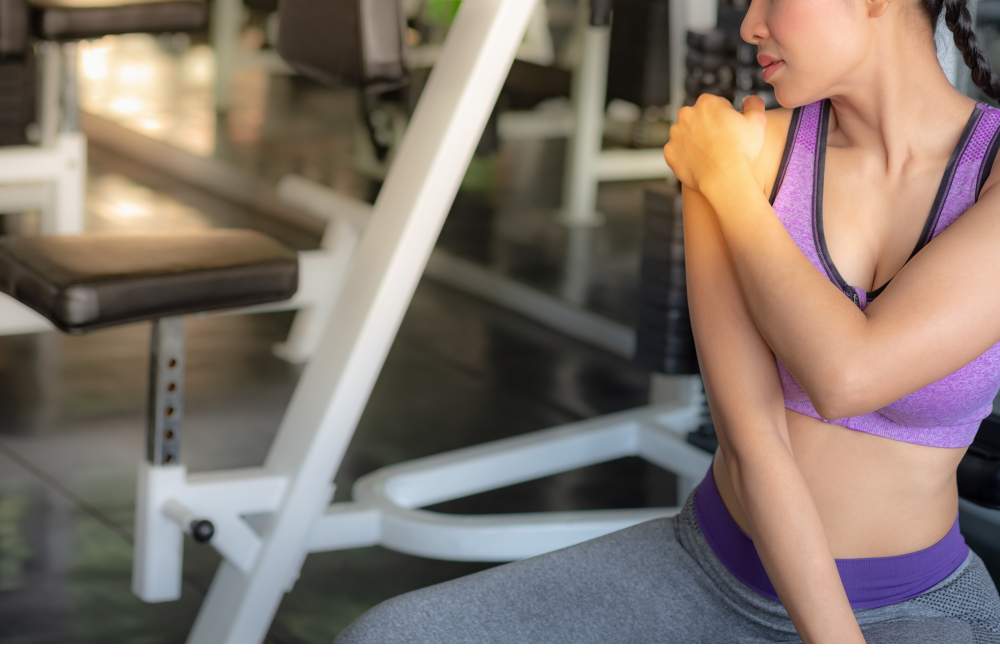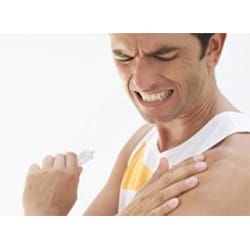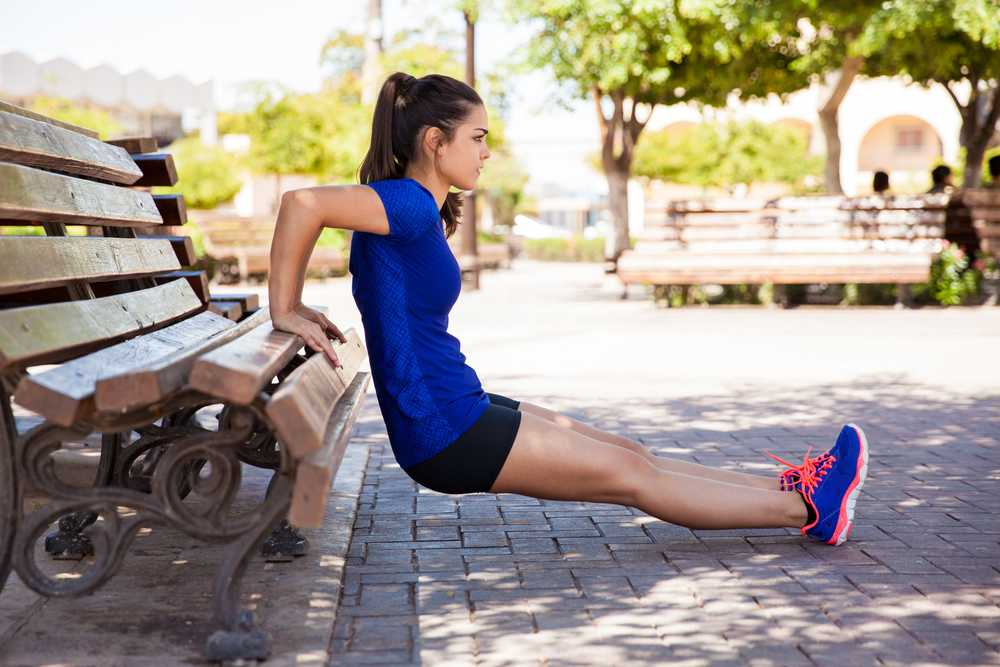You may have heard of a rotator cuff injury before, but do you know what exactly the rotator cuff is? The rotator cuff refers to a thick band of muscles and tendons that stabilize the shoulder and support shoulder and arm movement. You have a rotator cuff in both shoulders, and every time you move one or both shoulders, these muscles and tendons are activated. When you lift or raise your arm, you engage the rotator cuff. When you roll your shoulders up and back, your rotator cuff supports this movement. So many everyday movements and activities depend on a healthy, functioning rotator cuff, so an injury to the area can significantly impact you. If you start to notice shoulder pain while raising your arm or popping sounds when you move your arm, then you might be dealing with a rotator cuff injury. While you might be tempted to tough it out, you don’t want to risk making this kind of injury worse. Talk to your doctor about your symptoms and what activities and exercises you should avoid if you have a rotator cuff injury.
What Is the Rotator Cuff?
 The rotator cuff gets its name because of how these muscles and tendons form a cuff or hood around the shoulder joint. Your shoulder strength and stability rely on strong, healthy muscles and tendons in the area. The shoulder is a ball and socket joint, allowing you to have such a wide range of motion and move your arm in many different directions. The tissues that make up your rotator cuff cover the head of your arm bone, or humerus, which makes up the ball part of the ball and socket joint. The rotator cuff helps hold the ball firmly in the socket so that the shoulder joint can rotate properly. Because the shoulder joint allows for such a wide range of mobility, this also makes the area more susceptible to injury. In fact, the rotator cuff is a common location of injuries, especially among athletes and older adults.
The rotator cuff gets its name because of how these muscles and tendons form a cuff or hood around the shoulder joint. Your shoulder strength and stability rely on strong, healthy muscles and tendons in the area. The shoulder is a ball and socket joint, allowing you to have such a wide range of motion and move your arm in many different directions. The tissues that make up your rotator cuff cover the head of your arm bone, or humerus, which makes up the ball part of the ball and socket joint. The rotator cuff helps hold the ball firmly in the socket so that the shoulder joint can rotate properly. Because the shoulder joint allows for such a wide range of mobility, this also makes the area more susceptible to injury. In fact, the rotator cuff is a common location of injuries, especially among athletes and older adults.
Causes of a Rotator Cuff Injury
The three main causes of a rotator cuff injury are wear and tear, an acute injury, or an overuse injury. The cause of your injury can impact the severity of your symptoms and the types of treatment necessary for you to fully heal and recover.
Wear & Tear
General wear and tear on the body over time can cause your muscles, tendons, and other tissues to weaken and lose their effectiveness. Muscles can become stiff while tendons start to fray. The cartilage and other supportive tissues inside the shoulder can also start to wear down, which can impact the healthy functioning of the joint. As you age, you may lose strength and flexibility, especially around your joints. This can put you at risk for more injuries or issues.
Acute Injury
 An acute injury refers to a sudden injury, like a blow to the shoulder while playing sports or from a car accident. A slip and fall injury can also result in a rotator cuff injury if you land awkwardly on outstretched arms or your shoulder and side. One type of acute injury is a muscle strain, which refers to when a muscle becomes overstretched. If a muscle stretches outside its typical range of motion, it can result in a muscle strain, which causes pain, tenderness, and stiffness. Another type of sudden or acute rotator cuff injury is a muscle or tendon tear. A blow to the shoulder or upper arm could put so much unexpected pressure on the rotator cuff that it causes these tissues to tear. The tear could be partial, where part of the tendon tears away from the bone, also known as a partial thickness tear. If the entire tendon separates from the bone, it is known as a complete or full thickness tear.
An acute injury refers to a sudden injury, like a blow to the shoulder while playing sports or from a car accident. A slip and fall injury can also result in a rotator cuff injury if you land awkwardly on outstretched arms or your shoulder and side. One type of acute injury is a muscle strain, which refers to when a muscle becomes overstretched. If a muscle stretches outside its typical range of motion, it can result in a muscle strain, which causes pain, tenderness, and stiffness. Another type of sudden or acute rotator cuff injury is a muscle or tendon tear. A blow to the shoulder or upper arm could put so much unexpected pressure on the rotator cuff that it causes these tissues to tear. The tear could be partial, where part of the tendon tears away from the bone, also known as a partial thickness tear. If the entire tendon separates from the bone, it is known as a complete or full thickness tear.
Overuse Injury
Repetitive movements can also lead to strains or tears of the tissues that make up the rotator cuff. An overuse injury that impacts the rotator cuff commonly affects athletes like tennis players, swimmers, and baseball players. For example, a tennis player who repeatedly engages in overhead serves, swings, and other arm movements for hours at a time can put a lot of stress on the rotator cuff. Certain jobs or activities that require overhead motions like painting or reaching upward for long periods of time can also suffer an overuse injury. When the rotator cuff gets overloaded with repeated movement, it can cause swelling and inflammation to occur. Tendonitis is another common example of an overuse injury or chronic issue that can impact the rotator cuff. When the tissues that make up the rotator cuff regularly become inflamed, it can negatively impact your mobility and cause pain.
Symptoms of a Rotator Cuff Injury
The symptoms you experience will depend on the type and severity of your rotator cuff injury. An acute injury to the rotator cuff may result in immediate pain and discomfort, while an overuse injury may take a while for the pain to set in. In the case of wear and tear or degeneration of the rotator cuff and shoulder joint, it could take months or even years for the pain to start. In general, pain from a rotator cuff injury will typically cause you to avoid certain movements or activities that might make your discomfort worse. For example, reaching overhead or behind your back can become more difficult or painful due to a rotator cuff injury. You may develop progressive weakness in your shoulder because of a rotator cuff injury. Some people experience an increase in symptoms at night, like pain in the shoulder, especially if you try sleeping on the affected shoulder. In serious cases, you may lose range of motion or function in your arm. The sooner you see your doctor, the sooner you can get started on treatment to reduce your symptoms and prevent the injury from getting worse.
Exercises to Avoid with a Rotator Cuff Injury
 Certain exercises can also aggravate a rotator cuff injury or even make it worse. You depend on your rotator cuff for everyday functions, so you want to avoid types of activities and exercises that may prolong or complicate your recovery. The muscles of your rotator cuff need time to heal and regain strength after an injury. In general, you should avoid any activities like tennis or swimming that may have aggravated the rotator cuff to begin with. You should also skip weightlifting until your doctor clears you to avoid overloading your rotator cuff. Here are examples of 4 exercises to avoid while you heal from a rotator cuff injury:
Certain exercises can also aggravate a rotator cuff injury or even make it worse. You depend on your rotator cuff for everyday functions, so you want to avoid types of activities and exercises that may prolong or complicate your recovery. The muscles of your rotator cuff need time to heal and regain strength after an injury. In general, you should avoid any activities like tennis or swimming that may have aggravated the rotator cuff to begin with. You should also skip weightlifting until your doctor clears you to avoid overloading your rotator cuff. Here are examples of 4 exercises to avoid while you heal from a rotator cuff injury:
Bench Dips
A bench dip involves your arms behind you and locking your shoulders while you bend your elbows and lower your body toward the ground. Even when done with proper form, you risk aggravating a rotator cuff injury by putting too much stress on damaged tendons on an internal rotation. Bench dips can damage or reinjure the tissues in your shoulders and can even result in those tissues becoming weaker, not stronger. Bench dips are one of the most common ways to accidentally injure your shoulder while working out, so you should definitely avoid this exercise while you heal from a rotator cuff injury.
Lat Pulldowns
Lat pulldowns might seem like a relatively simple exercise that engages your shoulders and back muscles in a smooth motion. However, this pulldown exercise can also lead to strain or injury, especially if not performed properly. If you hold the bar too wide or pull down too far, you can end up putting too much stress on your shoulder joints. When performing lat pulldowns, you should only bring the bar or resistance band level with your chin before re-extending your arms. You should never do a pulldown exercise behind your neck because it can damage the shoulder joint and even lead to spine and neck injuries or issues.
Overhead Lifts
An overhead lift refers to when you press weights above your head, typically with a barbell, and finish with your arms fully extended over your head. Overhead lifts engage your chest, shoulders, arms, and upper back. If you have an injured rotator cuff, then other muscles in your body may try to overcompensate for the damaged muscles, which can lead to strains or injuries elsewhere. Your rotator cuff supports overhead movements, so a damaged rotator cuff can make overhead lifts painful and exacerbate existing injuries.
Upright Rows
To perform an upright row, you hold weights or a barbell with both hands in front of you, bend your elbows, and bring the weight to your chest before lowering back down again. Upright rows engage the shoulders and depend on healthy functioning rotator cuffs to be performed properly. The position necessary for upright rows depends on your shoulders in an internally rotated position, which can lead to a pinched tendon. Too much weight while performing upright rows can damage the muscles of your rotator cuff and set back your injury recovery.
Physical Therapy for a Rotator Cuff Injury
If you are recovering from a rotator cuff injury, then talk to your physical therapist about what exercises and activities you can engage in that will help rather than harm. Your physical therapist may recommend lighter-weight exercises and alternates to your typical exercise regimen so you can stay in shape but avoid aggravating or further injuring yourself. Physical therapists create personalized treatment plans for each person that address your specific symptoms, type and severity of your rotator cuff injury, and goals for treatment. Your physical therapist will support you through the recovery and rehabilitation from a rotator cuff injury so you can get in the game even stronger than before your injury.
Reduce Pain
Physical therapy can help you reduce your pain after a rotator cuff injury. Physical therapists do more than simply prescribe you a series of stretches and exercises. When you meet with a physical therapist for a rotator cuff injury, they may incorporate techniques like applying ice and heat, athletic taping, and therapeutic massage to help sore, aching muscles. Physical therapy should never make your pain worse, so it is important to talk to your physical therapist about any changes in your pain and discomfort so they can adjust accordingly. Part of managing your pain may involve stretches to warm up your muscles, patient education, and other hands-on types of care.
Improve Strength
Your physical therapist will also help you improve your strength after a rotator cuff injury. Physical therapists are movement experts who treat a wide range of musculoskeletal injuries. Physical therapy may include a combination of exercises, soft tissue mobilization, and other techniques to help strengthen the muscles that support your shoulder. Strengthening your muscles will help keep your shoulder joint stable and even help prevent future injuries.
Regain Range of Motion
Physical therapists also work with you to regain any lost range of motion that may have occurred because of a rotator cuff injury. Through gentle and safe stretches and exercises, they will slowly reintroduce movements that will improve your flexibility and allow you to engage in everyday movements like lifting or rotating your arms. As you regain mobility with physical therapy, they will also work with you to increase your range of motion with proper technique and form for activities or sports you regularly engage in that impact your rotator cuff and shoulders.
Visit AICA Orthopedics to find out more about what exercises you can and can’t do with a rotator cuff injury. Our Atlanta physical therapists will provide you with personalized attention and care to ensure you get the treatment you need to fully recover, rehabilitate, and prevent future injuries. Schedule an appointment at one of our AICA Orthopedics clinic locations in metro Atlanta to find an Atlanta physical therapist near you. Our physical therapists work alongside orthopedic doctors, neurologists, and chiropractors to offer a comprehensive and multi-specialty approach to diagnosis, treatment, and rehabilitation.
